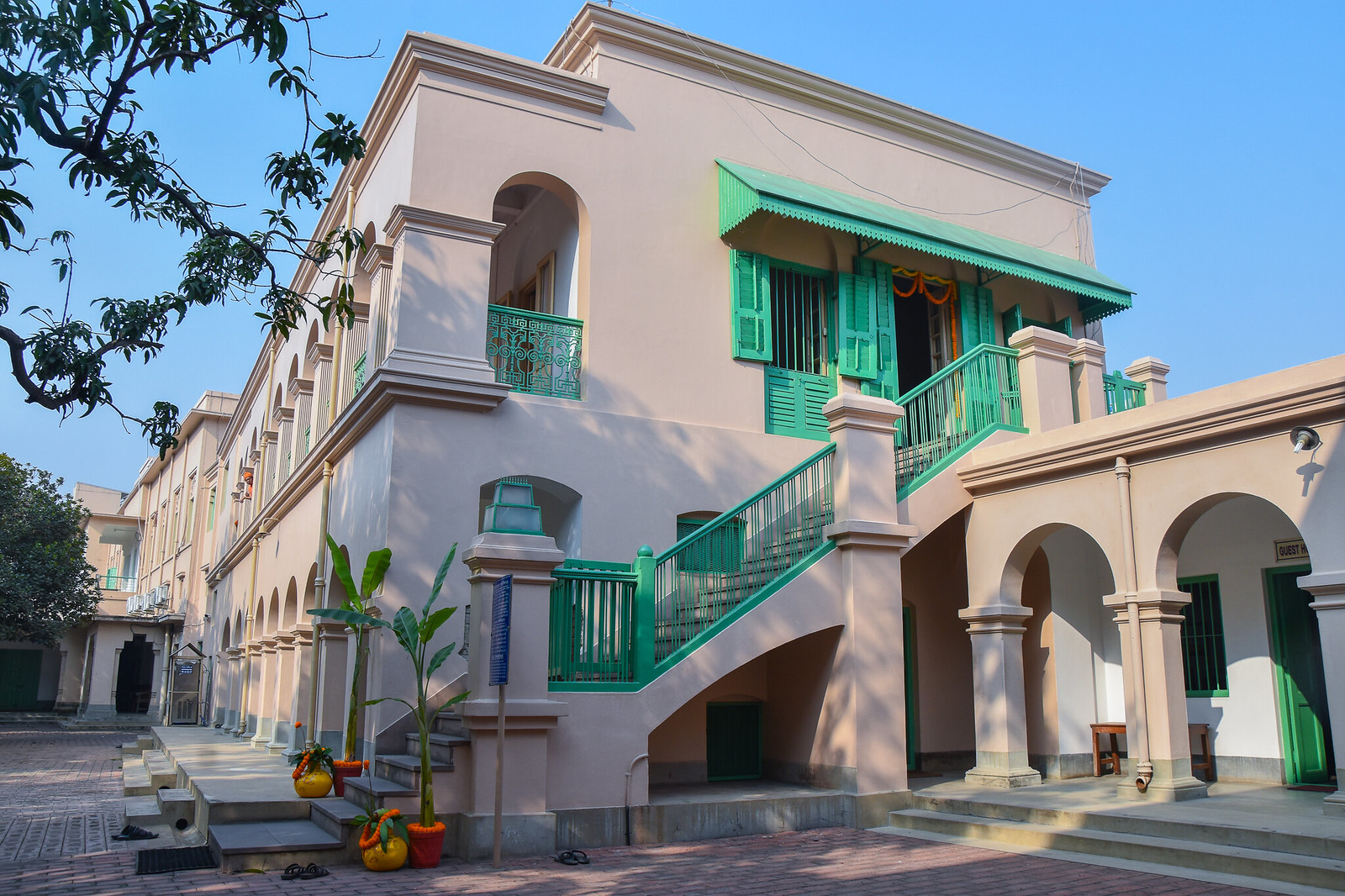On the northern side of the mango tree we see steps leading to the Old Temple, upstairs. We see two rooms when we enter the temple.
The room on the left is Sri Ramakrishna’s shrine. Until the Main Temple was built, Sri Ramakrishna’s sacred relics are enshrined in a pot known as atma-rama casket and worshipped here. Later his photo was added and his worship continued in this temple for about forty years, from its inception till 14 January 1938. Mother, Swamiji and some of Sri Ramakrishna’s disciples have worshipped Sri Ramakrishna here. However, the pictures that we see here now were placed later.
The room on the right is ‘Mahapurushji’s Room’. Originally this was kept as Sri Ramakrishna’s bedroom. With its doors closed, Swamiji meditated here for about three hours on the day he left his body. On that day his actions were most deliberate and meaningful. ‘At 8.30 a.m. Swamiji came to the chapel and sat down in meditation there. On Swami Premananda coming there at 9.30 a.m. for doing the daily worship of the Master, Swamiji asked him to spread out his asana (seat) in the bedroom of the Master and to bolt all the doors and windows of that room.’ His meditation lasted for a full three hours. ‘What transpired there, no one will ever know,’ records his Life.
After the Main Temple was built, things used by Swami Shivananda were kept in this room, and came to be known as ‘Mahapurushji’s room’.
On the right, or the southern side, there is a veranda. Swami Shivananda had a vision of Sri Ramakrishna walking there. Once when a young monk had failed to wipe the rain water that had fallen there, he admonished him: ‘My boy, what service is this! I see Sri Ramakrishna walking there every evening. He is not able to walk there due to the water accumulated there. His feet are getting wet. My son! Always see that you do things in such a way that he is not put to any kind of difficulty. He is our everything; he is the Soul of the world. If he is pleased world is pleased.’
As we come out of the shrine and stand on the landing of the staircase, we see before us a small wooden lattice that leads to a terrace. From his room Swamiji used to visit the shrine through this terrace.
The staircase, again, is rich with sacred memories. After his morning meditation on the last day of his life, Swamiji came out of the shrine and was descending the stairs with a song on his lips. His Life records: ‘In his meditation his own Master and the Divine Mother—to his own realization One and the Same Personality—must have been present, for, when he had finished, he broke forth in a touching song in which the highest Jnana mingled with the highest Bhakti.’ That song was ‘Is my Mother Shyama black?… (Shyama ma ki amar kalo re…).’
The building adjacent to the old shrine (presently, the office of the Manager Maharaj of Belur Math) is replete with memories of some great lives. This building was also part of the earlier Math, where lived almost all the direct disciples, the Presidents of the Order till Swami Visuddhananda, the eighth President, and some great monks of later generation who were highly respected for their spiritual attainments. So this building is a temple of sacred memories. In the area between this building and the Old Temple building there are some offices now. Durga puja was held here in the early days.







